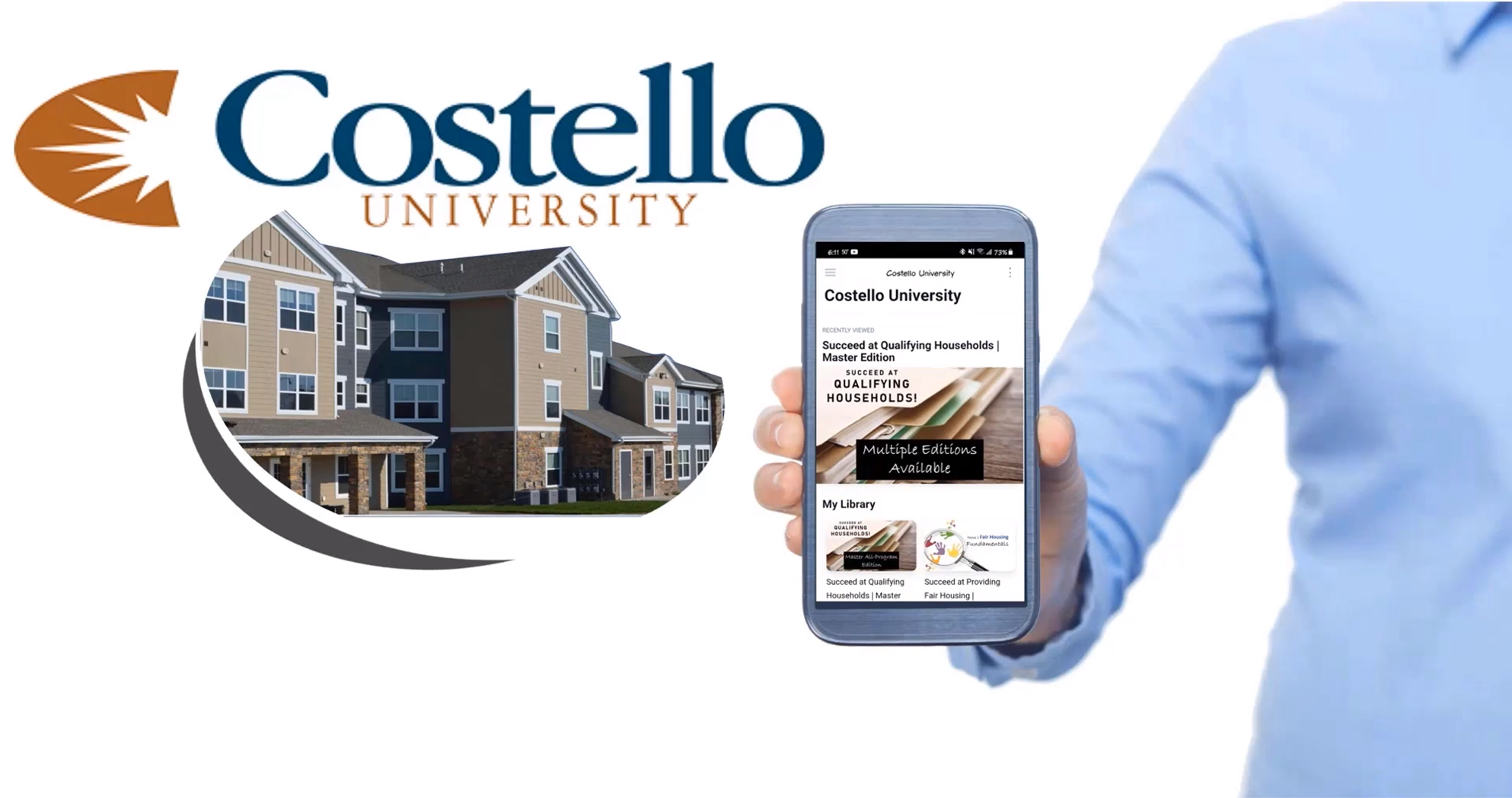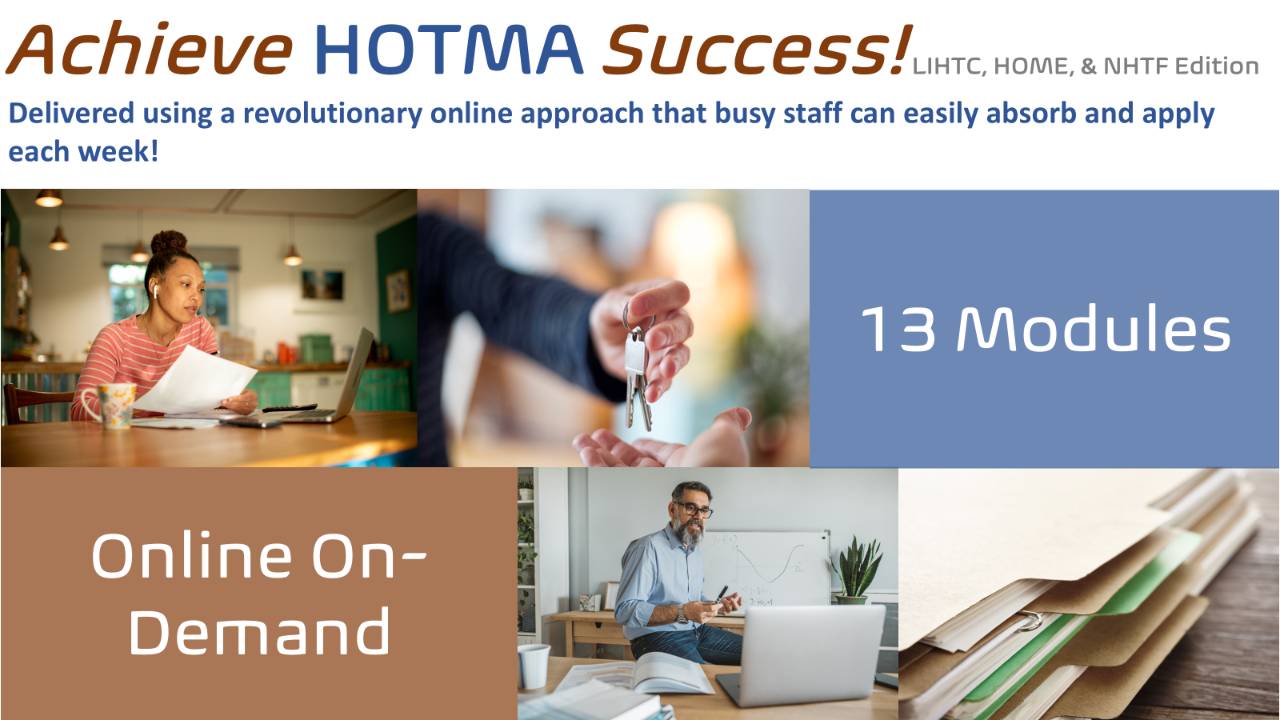Format Options for the "Tool Box"
To start with, we will need to have the right tools on hand. Since we deal with government statutes and regulations, federal documents are the primary tools that we use. Building a library of these documents is an important step for any serious compliance professional. The factor to consider relates to the format of the library that you want to build. In times past having a complete library meant keeping shelves and shelves full of manuals and binders. You may still have a paper library, but an increasing number of modern professionals find paper copies less desirable than electronic versions. E-documents can be accessed either online or stored locally on a computer or network. Some documents change fairly often or are replaced altogether, making paper libraries difficult to keep up. All of those handwritten notes in your paper copy of Change 2 of the HUD handbook are difficult and time-consuming to transfer to Change 3 and then 4, which have very different page and paragraph references for many topics. Searching by keyword in an electronic document is more time-effective compared to leafing through literal pages and you can literally see every reference to a specific keyword in seconds. Modern software also makes bookmarking and annotating easy, replicating the good aspects of our old handwritten notes in yesterday’s paper manuals. Electronic documents are also easily re-named allowing a user to create a naming convention for easy sorting and organizing. Finally, many good document management programs allow for extracting and saving just the part of the document that deals with a specific topic. Do you often have to answer technical questions asked by those you work for or those who work for you? If named in such a way as to make searching by topic easy, a collection of such mini-documents can become a powerful tool when responding to frequently asked questions.
Stocking the “Tool Box”
Once the format of the library is decided we can start filling our “tool box” whether it is paper or electronic. What key documents must we be sure that we have? Let’s look at some basic documents that you can’t go wrong having on hand, as well as a few for more “power users.”
Surprising to many new tax credit professionals is the idea that the most used housing tax credit document is not from the IRS. Rather, it is from HUD. Because LIHTC rules dictate that we must determine tenant income in a manner consistent with Section 8 regulations, the IRS guides us to use the HUD multi-family housing handbook 4350.3 as legal authority when making crucial household qualification determinations. For many tax credit compliance personnel making these determinations forms a major part of their daily responsibilities. This makes the HUD handbook a vital document indeed! Literal constructions tools must be used responsibly and carefully. The same applies to our use of documents. The HUD Handbook is actually intended for other housing programs, so we are careful only to apply those sections relevant to LIHTC income determination. HUD student eligibility rules, rent calculation, and EIV verification requirements that are listed in the 4350.3, for instance, do not apply to the LIHTC program. In fact, of the nine chapters of the HUD Handbook, only three directly apply to tax credit properties, and those only in part. These are Chapters 2, 3, and 5. Chapter 2 discusses Fair Housing principles that apply (although Section 504 requirements covered do not). Also applicable are elements in Chapter 3 explaining who is counted in a household and Chapter 5, Section 1 (Determining Income). Exhibits 5-1 and 5-2 to Chapter 5 list HUD income and asset inclusions and exclusions and also directly apply to our tax credit program.
On rare occasions, HUD will publish a Notice relevant to their income and asset rules that also have an impact on the LIHTC program. Before the rules are eventually published in a revision of the 4350.3, a Notice may be the only source of direction.
The IRS has not produced a handbook for the LIHTC program. Instead, individual documents that serve as legal authority on specific topics are released. Besides the statute (§ 42 of the Internal Revenue Code) and related regulations, we get Notices, Revenue Rulings, and Revenue Procedures, among others. As a service to state agencies who have to make compliance determinations, the IRS has given instructions in the form of a document nearly universally referred to as the 8823 Guide. This Guide is not legal authority, but it does include hundreds of references to documents that are. In that way, it acts as a reference index by compliance topic. It also includes a fair amount of interpretive guidance from the examiners of the program.
State Agency Manuals
A strength of the LIHTC program is that it allows states to use the LIHTC program to meet their own state needs. The side effect of this is that State Housing Finance Agencies have a great deal of authority over how the program works in their states. In order to navigate the complexities of your state’s requirements, you need a tool customized for your state. Many states have a Compliance Manual or provide instructions on their websites. If your state has not done so, then you will need to cultivate a good relationship with a compliance officer who you can have on speed-dial who can authoritatively provide state guidance.
Find state manuals by contacting your state agency.
Now for a tool that is a bit more “advanced.” The IRS has provided instructions to IRS examiners in the form of the §42 Low-Income Housing Credit Audit Technique Guide (ATG). It is a sister document to the 8823 Guide and follows the same format. Examiners will use this ATG when auditing LIHTC properties. This alone makes it of interest to LIHTC compliance professionals. However, it also contains an outstanding bonus: extensive reference documentation to complement both Guides. These occur in the Appendix. Exhibit A to this Appendix is a useful glossary of tax credit terms. Exhibit B provides a fairly exhaustive list of specific-topic references listed below:
Armed with some excellent and up-to-date tools, we are now prepared to do our jobs more effectively - and keep that saw sharp!
Next week, Part 2 in this mini-series will cover building your library for other key programs.
Looking for quality affordable housing occupancy training? Check out our Succeed at Qualifying Households series of courses. There are options for all major Affordable Housing programs. You can read more HERE.

 We recently visited the construction site for a new affordable housing property. During our time there, we observed one of the construction workers replace the blade on the power hand saw that she was using. The new blade made a noticeable difference in the speed and quality of her work. This seemed to me to be a modern version of the old parable about the worker using a handsaw who worked harder and harder, but became less and less effective until he stopped altogether. His dull blade would not cut anymore. Taking the time to sharpen the saw would have ultimately saved him a lot of effort and even saved the job. We work hard in the affordable housing industry. Our tools are our knowledge and expertise. Tax credit professionals recognize the importance of taking time to refresh our knowledge, to “sharpen the saw.” This article is the first in a sporadic series with the theme Back to Basics. In keeping with this theme, the series will provide a refresher on the fundamentals of tax credit compliance. Just to keep it interesting for everyone, we will also throw in some advanced elements as well. To kick off our Back to Basics topic, we are going to publish a two-week miniseries on building effective compliance libraries. This article discusses the tax credit program. The follow-up will be on other programs often combined with tax credits.
We recently visited the construction site for a new affordable housing property. During our time there, we observed one of the construction workers replace the blade on the power hand saw that she was using. The new blade made a noticeable difference in the speed and quality of her work. This seemed to me to be a modern version of the old parable about the worker using a handsaw who worked harder and harder, but became less and less effective until he stopped altogether. His dull blade would not cut anymore. Taking the time to sharpen the saw would have ultimately saved him a lot of effort and even saved the job. We work hard in the affordable housing industry. Our tools are our knowledge and expertise. Tax credit professionals recognize the importance of taking time to refresh our knowledge, to “sharpen the saw.” This article is the first in a sporadic series with the theme Back to Basics. In keeping with this theme, the series will provide a refresher on the fundamentals of tax credit compliance. Just to keep it interesting for everyone, we will also throw in some advanced elements as well. To kick off our Back to Basics topic, we are going to publish a two-week miniseries on building effective compliance libraries. This article discusses the tax credit program. The follow-up will be on other programs often combined with tax credits. 





